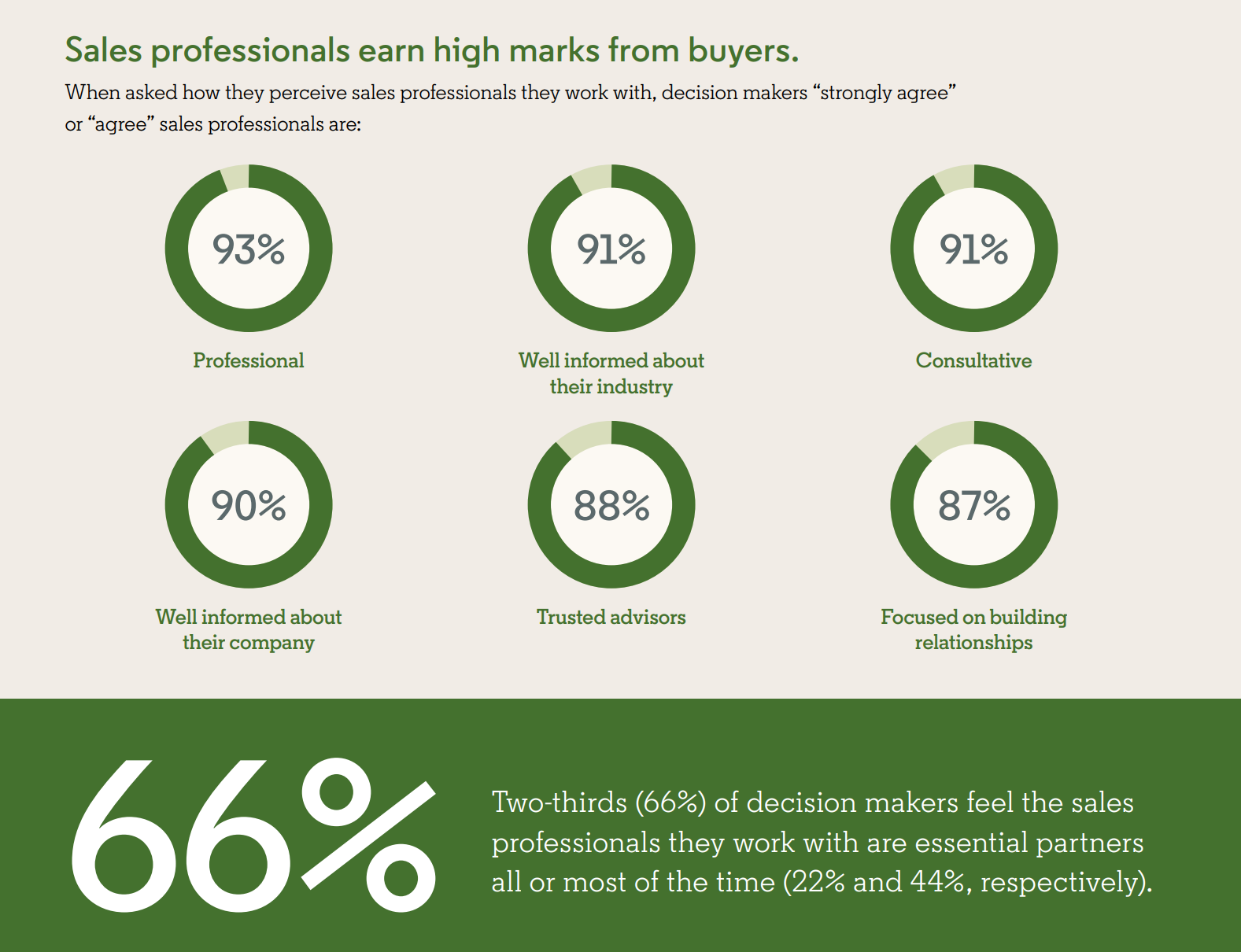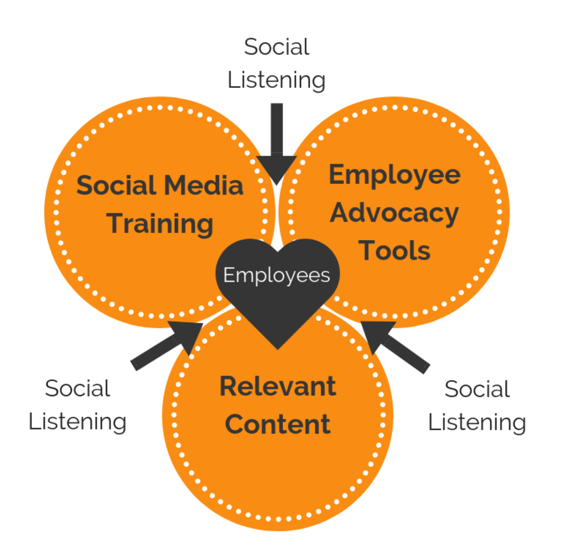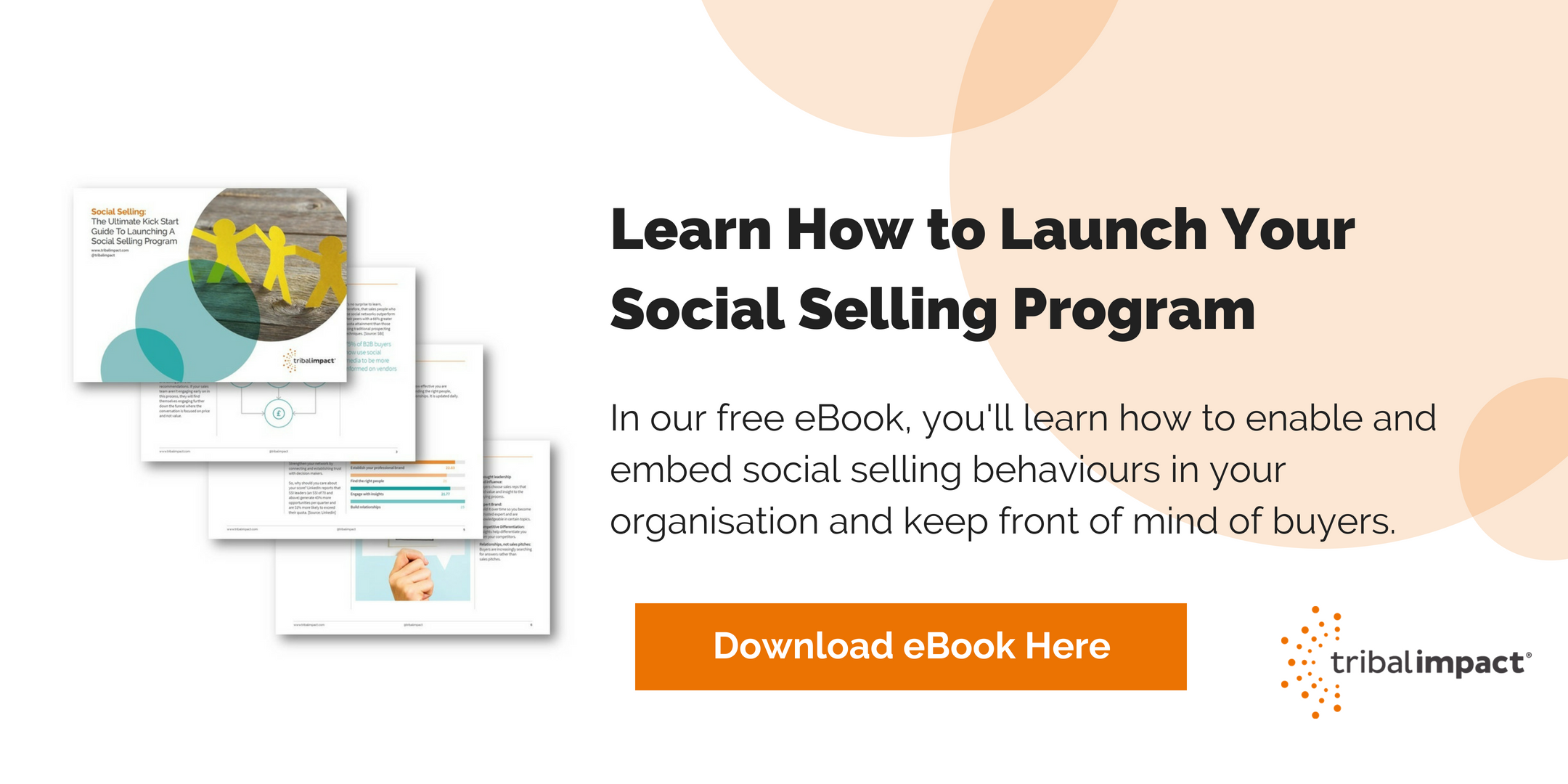Social Selling involves enabling your sales teams to deepen their relationships and increase trust with customers using social media. Employee Advocacy is about activating your wider employee community on social media to influence and build credibility with your market.

So, whilst both programs relate to social media, they utilise it in two very different ways.
This question will likely be asked by practitioners in complex organisations that are big enough to have developed individual programs in isolation of each other.
However, the two topics are merging. A clear sign of this is the recent integration of LinkedIn’s own employee advocacy tool, Elevate, into the only B2B Social Selling platform LinkedIn Sales Navigator.
Organisations are now re-evaluating their Social Business technology stack, trying to understand how they fit together and what’s best for their business.
In this post, I’ll unpick this topic once and for all to explain whilst the two are very different, there are opportunities to align.
What Is Employee Advocacy?
Many folks, in my opinion, get this definition wrong.
It isn’t about asking your employees to share brand content on their social media channels to increase reach. That is one benefit, but it shouldn’t be the driving objective.
Employee Advocacy, in my opinion, is about enabling your employees to find their voice within the context of the brand voice and help build their confidence to tell their story on social media.
It’s about putting your employee expertise, passion and interests out there in front of your logo. Helping them build their brand under the wider context of the business brand.
Why?
Because it’s great to showcase the talent you have working in your business – it attracts customers and it attracts tomorrows talent.
What Is Social Selling?
Social Selling isn’t about selling on social media at all. In fact, we should probably drop the ugly term altogether. You may notice that LinkedIn have started calling it “Modern Selling”.
Whatever the name, It’s about relationships. It’s about finding, connecting, nurturing and deepening relationships…at scale. There’s the key difference. At scale.
You can do relationship building the traditional way with phones, emails and face-to-face meetings (which are still important by the way).
However, if you want to reach more people and have more relevant conversations, you need to find a way to scale your approach.
Platforms like LinkedIn allow you to do this.
The Similarities & Differences – It Starts With Content
When it comes to similarities it’s all about content.
Employee Advocacy is the obvious place to start because in its raw state, it’s a content dissemination platform. An app where employees can log in, read content and even click to share with their social networks.
In our experience, the content mix is often skewed towards the company. Whether it has been created for the company or by the company, it’s often affiliated in some way to the brand. It’s not unusual to see a advocacy content mix of 80% brand to 20% non-brand.
However, this is where the differences kick in.
Social Sellers want (and need) to position themselves as a trusted adviser to their buyer. An industry specialist that focuses on supporting the buyer through their decision-making journey not a sales rep pitching the brand at every available opportunity.
We know this because according to the LinkedIn State Of Sales Report which shows sales professionals will earn higher marks with buyers if they focus their content strategy around this.

Social Sellers need a healthy mix of brand vs non-brand content. They need the reverse of what you typically find in an advocacy tool – 20% brand to 80% non-brand.
So, when it comes to differences it’s all about the content, too!
Why Should Social Selling & Advocacy Align?
It’s typical that programs are launched and led by specific functions internally – it varies by company. Social Selling is often led by the Sales Enablement team and Advocacy programs are increasingly sitting within the Marketing team.
However, when the Social Selling program lead realises the importance of content, the team will actively seek out an easy way to provide that for program members – normally an advocacy tool.
In most cases these tools are in place before the formal advocacy program is launched.
Or they onboard a tool not realising one is already available internally.
Or the existing advocacy tool doesn’t have the right content mix to serve the needs of the Social Selling community.
This is where the issues start. Two (or more in some cases) advocacy tools will cause:
- Duplication of effort
- Duplication of content
- Duplication of training
- Duplication of spend
- Confusion within the employee community
- Inaccurate and/or inconsistent measurement and reporting
In my opinion, it’s just best not to go there.
If you haven’t deployed either program yet, get your heads together and start from one place. Read the next section to understand how.
How Can Social Selling And Advocacy Work Together?
Fundamentally, it’s about understanding that the two programs aren’t so different.
Content should be made available to all employees (irrespective of their role) to help inform, inspire and engage them.
Content can therefore be about the brand, the industry, skills development, leadership, products, peer thought leadership, external thought leadership…I could go on.
The point is, content doesn’t just have to be only sourced from within.
Open the doors to your employee advocacy content strategy. Encourage your employees to learn, share and inspire others. Help them build confidence and credibility around their own interests – not just the interests of the business.
Sure, this may result in your employees directing traffic to other destination sites. That’s okay in the big scheme of things because it’s about nurturing relationships with authentic conversations.
Some organisations split the content mix 50% third party to 50% brand content. I’ve seen some organisations host 80% third party to 20% branded.
The best way to find out is to ask your community and experiment a little.

So, Are They So Different?
In my opinion, a strong Social Business strategy is built upon 3 pillars – training, tools and content.
The training is different. Sales teams will require specialised, tailored training to support their specific sales needs. Employees will need a highly simplified version of this training to then optimise their professional profiles and networks online.
In addition, your sales teams are likely to use LinkedIn Sales Navigator – a premium LinkedIn product designed to optimise time spent nurturing relationships at scale on LinkedIn. Not every employee will need this.
However, content is a pillar that is relevant to all audiences – whether sales, finance, HR, support etc.
All your employees have the power to influence a buyer or future employee so encourage them in a way that keeps them authentic to their purpose.
Maybe even let them contribute – but that’s for another blog post!
Follow us on social for more content like this!

